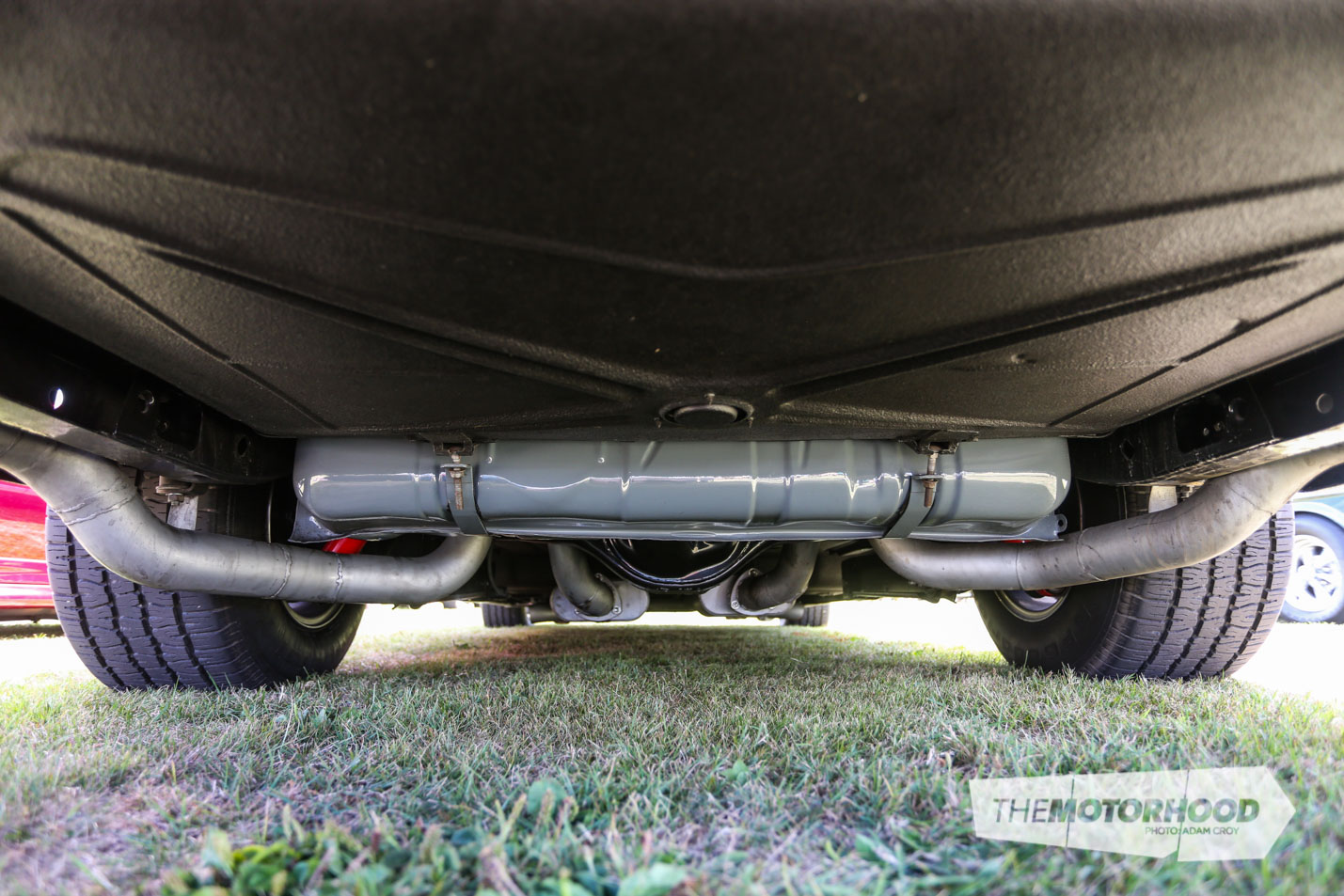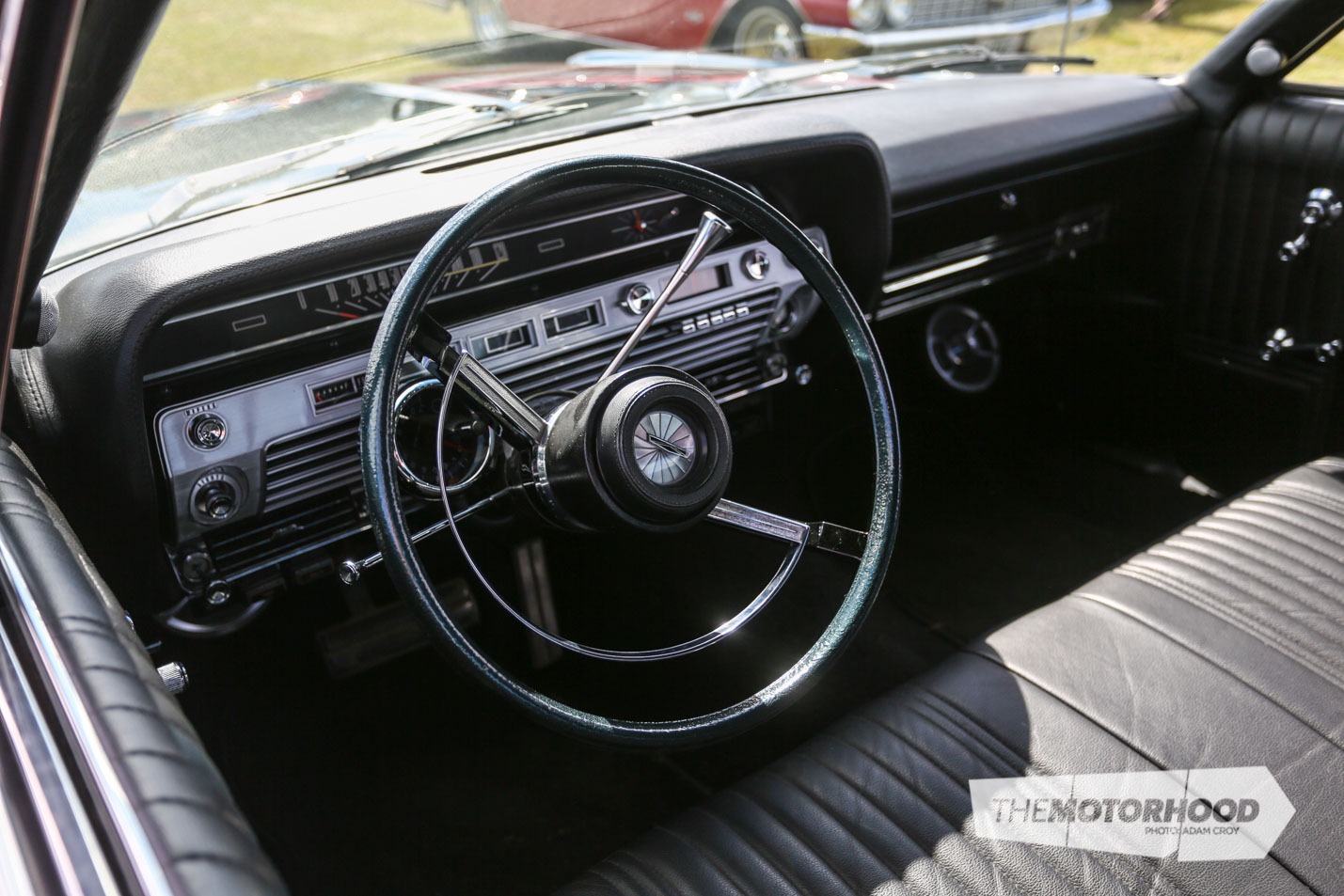As Americarna is one of the largest events for American vehicles in New Zealand, there’s never any shortage of jaw-dropping vehicles on display. We came across this exquisitely restored ’67 Galaxie while it was parked up at Onemana.

The third-generation Galaxie is a handsome vehicle from the factory — those stacked headlights and expansive grille make for a seriously good-looking face.

This one’s more than just sharp lines and good looks, though — a set of 15-inch Billet Specialties wheels look right at home under the big Galaxie body, and the fitment is about perfect. These don’t look like they were just grabbed off the shelf, and it’s always refreshing to see instances where people buy wheels ‘for’ their car, rather than just buy wheels.

Chrome-finish Wilwood calipers also peer out from between the Billet Specialties spokes, hinting that there may be a few horses under the hood that need reining in.

Flanking those rad front wheels is a hint as to what resides beneath the Galaxie’s long bonnet, which unfortunately remained closed during our five minutes with the car. The 390 badge is a bit of a no-brainer — implying it’s a 390ci FE V8 powering the beast. In a world where 572ci engines can be bought off the shelf, it’s sometimes easy to forget that 390 cubes is still a hell of a lot. Could the ‘Double Trouble’ decal be hinting at a dual-quad (twin four-barrel carbs) set-up? We don’t know, but speculating is always fun.

A look under the rear shows that this car hasn’t been given a quick blow over with a paint gun either. The chances of it having been subject to a body-off rebuild are pretty high — you don’t just refinish your diff, fuel tank, and undercarriage for a laugh.

Inside, it’s no less impressive. The upholstery looks spot-on, and while there are hints of a banging sound system, no plastic Japanese head unit is readily visible. We’d go so far as to hazard a guess that the factory-looking stereo is actually a modern reproduction, designed to look the part. And it’s nice to see the factory tiller, tying everything together perfectly. Was it kept for easy visibility of that oh-so-subtly hidden tacho?

This Galaxie is no magazine cover car, but it’s a beautifully finished example that we’d be ecstatic about having the keys to. You don’t need 1000hp, or a 20-layer paint job, or a crazy customized interior — having a beautifully finished cruiser is more than enough, especially if you know it’s been done right, and will get you wherever you want to take it.




